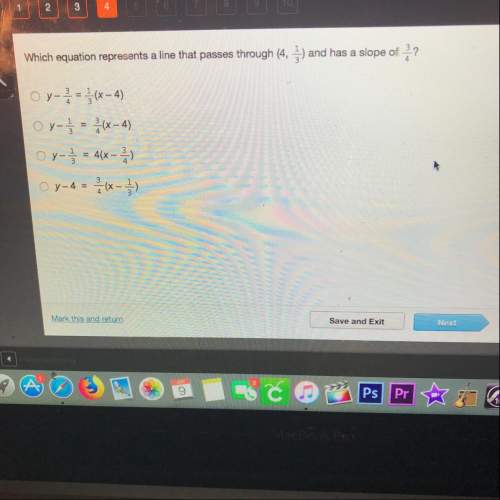
Mathematics, 12.12.2020 16:40 jeremiah1212
Help with these two problems please:
An isosceles triangle has two sides of length n where n is an integer greater than 1. What is the smallest possible integer length of the third side?
A. 0
B. n−1
C. 1
D. ⌊n2⌋+1
An isosceles triangle has two sides of length n where n is an integer greater than 1. Describe the largest possible integer length of the third side for this triangle.
A. The largest possible integer value of the third side is 2n−1 because the sum of the two side lengths is 2n and the third side must be less than the sum.
B. The largest possible integer value of the third side is 2n because the sum of the lengths of the two sides is 2n.
C. The largest possible integer value of the third side is n+1 because the sum of the lengths of the two sides is n+1.
D. The largest possible integer value of the third side is n2−1 because the sum of the two side lengths is n2.

Answers: 2


Other questions on the subject: Mathematics

Mathematics, 21.06.2019 16:00, ashl3yisbored
Determine the mean and variance of the random variable with the following probability mass function. f(x)=( 729divided by 91) (1 divided by 9) superscript x baseline comma x equals 1,2,3 round your answers to three decimal places (e. g. 98.765).
Answers: 3

Mathematics, 21.06.2019 17:00, heysonic91
The perimeter of a movie screen is 54 meters. the screen is 18 meters wide. how tall is it?
Answers: 1

Mathematics, 21.06.2019 20:30, asdfjk6421
2/3(-6y+9x) expand each expression using the distributive property
Answers: 3
You know the right answer?
Help with these two problems please:
An isosceles triangle has two sides of length n where n is an...
Questions in other subjects:

Social Studies, 27.09.2019 13:30



Mathematics, 27.09.2019 13:30

Mathematics, 27.09.2019 13:30


History, 27.09.2019 13:30

Advanced Placement (AP), 27.09.2019 13:30


Mathematics, 27.09.2019 13:30





